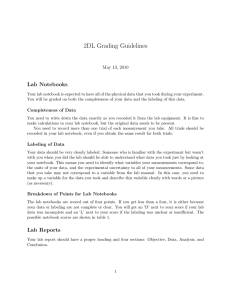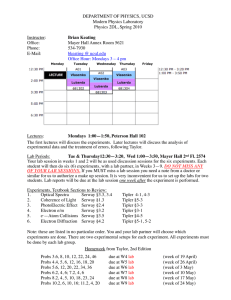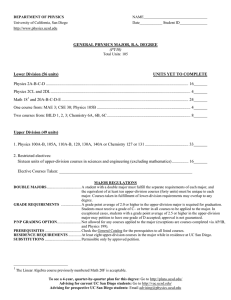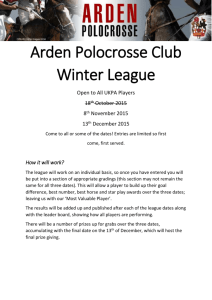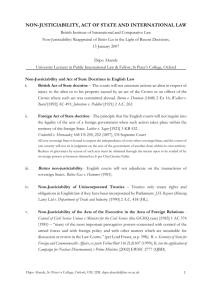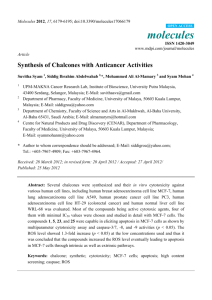PHYSICS 2DL – SPRING 2010 MODERN PHYSICS LABORATORY Prof. Brian Keating
advertisement
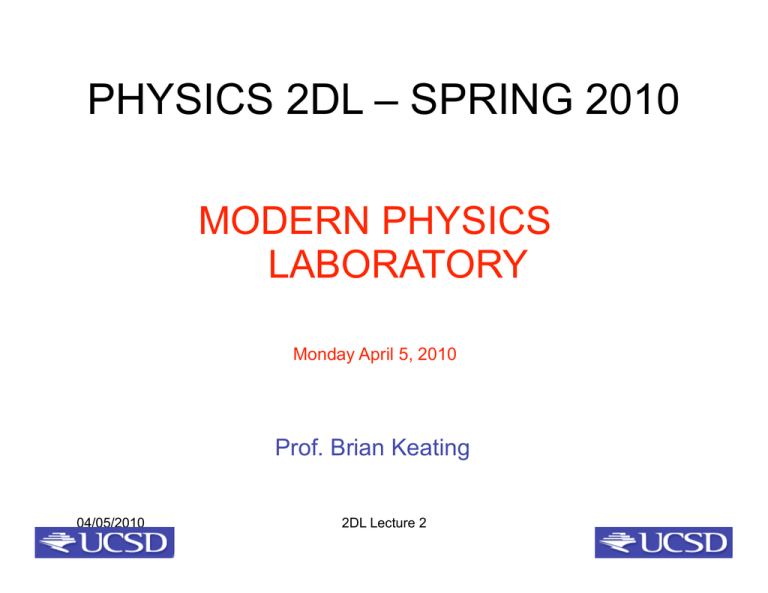
PHYSICS 2DL – SPRING 2010 MODERN PHYSICS LABORATORY Monday April 5, 2010 Prof. Brian Keating 04/05/2010 2DL Lecture 2 2DL • Review of policies from last week • Theory of first few experiments continues in lab this week • No lecture May 31 • Error propagation 04/05/2010 2DL Lecture 2 Policies • Missed labs CAN’T be copied! • Must attend make up lab, take data YOURSELF, and write up labs. Missing, Copying data and/or reports will result in 0 points for that lab. • Need a note from doctor or UCSD official to be allowed to re-take lab. 04/05/2010 2DL Lecture 2 Lab Manual Textbook Printed out and bound for you. Will be distributed in your lab section next week. “Introduction to Error Analysis”, by Taylor No experimental information but good intro on how to handle data once your experiment produces some… Full of Homework problems and helpful examples. $28 used on Amazon 04/05/2010 2DL Lecture 2 Homework • Problems listed on 2DL Spring 2010 syllabus -Website: • http://physics.ucsd.edu/students/courses/ spring2010/physics2dl/ • Website has lecture notes from prev week • All HW problems are found in Taylor • Hand-in HW to TA in Lab as on schedule, (changed on syllabus). • HW #10 IS due in lab, week of 31 May (Memorial Day week so no lecture). 04/05/2010 2DL Lecture 2 Lab Sections (Tuesday/Thursday 12:30p & Wednesday 1p, 3 hours • Introduction to the experiments (this week) in lab. • You start doing the labs in week 3 - next week. • Pick your partners THIS WEEK IN LAB. • Sign up for your weekly labs THIS WEEK IN LAB. 04/05/2010 2DL Lecture 2 Notebooks • Few pages of text • Include data, plots 04/05/2010 2DL Lecture 2 Lab Notebooks & Reports • See ‘Ace your Reports’ • Include data, plots with labels, sketches, in ink. 04/05/2010 2DL Lecture 2 Winner of 1996 Nobel Prize in D. Osheroff, 1972. Physics Scientific Errors Errors uncertainties not mistakes! inevitable and intrinsic part of any measurement Principal sources of errors in measurements: 1) limitations of measurements tool 2) limitations of experiment design 3) imprecise definition of measured quantity random errors can be reduced through statistical methods 04/05/2010 2DL Lecture 2 Quantifying Errors • • • a. Precision. This is a measure of repeatability, i.e. the degree of agreement between individual measurements of a set of measurements, all of the same quantity b. Accuracy. This is a measure of reliability, and is the difference between the True Value of a measured quantity and the Most Probable Value which has been derived from a series of measures. c. Resolution. This is the smallest interval measurable by an instrument. 04/05/2010 2DL Lecture 2 Measurements and Errors Always present, Inevitable! best estimate uncertainty __ 9999.7 + 10.1 9999 + 04/05/2010 2DL Lecture 2 9999 10000 “true” mileage? Error Propagation 04/05/2010 2DL Lecture 2 Limitations of measurement tools LIGO observatory test masses 10-3 m 5,600 m detector 10-4 m laser 10-5 m Measure L = L1 + L2 L1 = 1.01, L2 = 1.1, what is L? 04/05/2010 2DL Lecture 2 10-19 m! Accuracy versus Precision Ohm’s Law: V=IR Voltage[V] precise but inaccurate 04/05/2010 accurate but imprecise 2DL Lecture 2 Current [A] Accuracy versus Precision … how close to the “true” value … uncertainty Systematic error precise but inaccurate 04/05/2010 accurate but imprecise 2DL Lecture 2 Error Propagation 04/05/2010 2DL Lecture 2 Error Propagation 04/05/2010 xbest xbest - δx xbest + δx 2DL Lecture 2 Error Propagation q(xbest + δx) qbest = q(xbest) q(xbest – δx) 04/05/2010 xbest xbest - δx xbest + δx 2DL Lecture 2 Error Propagation δq = q(xbest+δx) – q(xbest) δq depends on: 1) δx 2) q(x) q(xbest + δx) qbest = q(xbest) q(xbest – δx) 04/05/2010 xbest xbest - δx xbest + δx 2DL Lecture 2 Error propagation δq = q(xbest+δx) – q(x) 04/05/2010 2DL Lecture 2 Error propagation 04/05/2010 2DL Lecture 2 Simple Example: Adding Uncertainties • • • • • Measure Diameter, D = 6.0 ± 0.1 m Radius = R? Circumference = C? C = 18.8 ± 0.3 m R = 3.00 ± 0.05 m 04/05/2010 2DL Lecture 2 R LEAST SQUARES FITTING xj ;yj y = f(x) e u r t v ue l a y4-(A+Bx4) y3-(A+Bx3) 1. 2. Minimize χ2: 04/05/2010 … 3. A in terms of xj yj ; B in terms of xj yj , … 2DL Lecture 2 Basic Electronics- this week in Lab • Play with RLC circuit elements and Oscilloscopes 04/05/2010 2DL Lecture 2 Simplest Circuit 04/05/2010 2DL Lecture 2 Electrons in a Resistor F= ma = qE Lines of Electric Force (-Electric Field) 04/05/2010 Atoms of Resistor Material (e.g. Carbon) 2DL Lecture 2 Resistor Fabrication 04/05/2010 2DL Lecture 2 RLC Circuits: the Loop Rule Work done by battery on the charge: E dW = Edq = Eidt R E i dt = i2 R dt(~Fd) Thermal energy at the resistor E = iR 04/05/2010 2DL Lecture 2 More Advanced Circuits 04/05/2010 2DL Lecture 2 E&M & H2O • Example analogies 04/05/2010 2DL Lecture 2 H2O resistor 04/05/2010 2DL Lecture 2 E&M & H2O 04/05/2010 2DL Lecture 2 E&M & H2O 04/05/2010 2DL Lecture 2 Capacitor 04/05/2010 Inductors 2DL Lecture 2 Inductor 04/05/2010 2DL Lecture 2 Inductor 04/05/2010 2DL Lecture 2 Inductor 04/05/2010 2DL Lecture 2 Inductor 04/05/2010 2DL Lecture 2 Oscilloscopes •You can determine the time and voltage values of a signal. •You can calculate the frequency of an oscillating signal. •You can tell if a malfunctioning component is distorting the signal. •You can find out how much of a signal is direct current (DC) or alternating current (AC). •You can tell how much of the signal is noise and whether the noise is changing with time. 04/05/2010 2DL Lecture 2 Oscilloscope J.J.Thomson N.P. physics 1906 04/05/2010 2DL Lecture 2 Oscilloscope J.J.Thomson N.P. physics 1906 04/05/2010 2DL Lecture 2 Oscilloscope Similar to the TV… J.J.Thomson N.P. physics 1906 04/05/2010 2DL Lecture 2 Oscilloscope vertical horizontal scale scale trigger Ch 1 Ch2 ext coupling DC V/div Ch1 04/05/2010 2DL Lecture 2 Sec/div Ch2 AC LF rej HF rej Ext input Oscilloscope vertical horizontal scale scale trigger Ch 1 Ch2 ext coupling DC V/div Ch1 04/05/2010 2DL Lecture 2 Sec/div Ch2 AC LF rej HF rej Ext input
